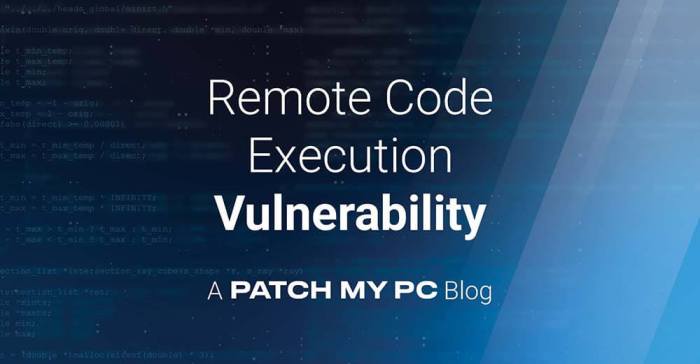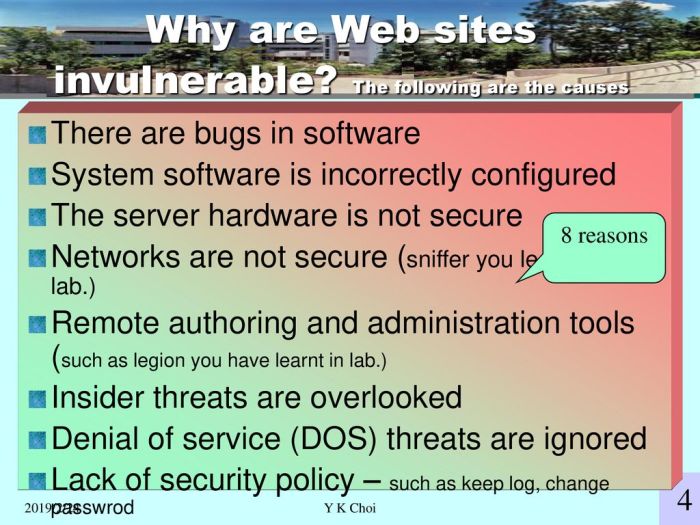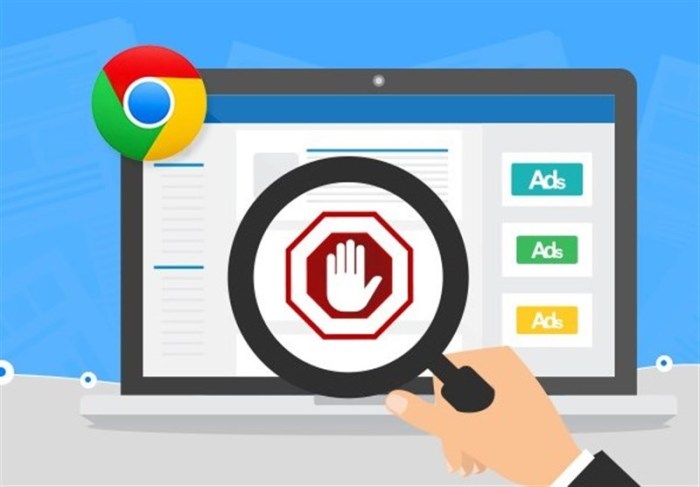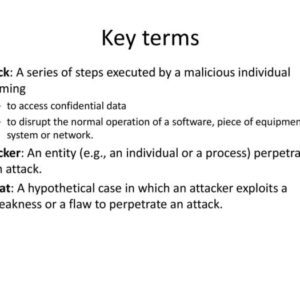Windows OLE Remote Code Execution Vulnerability: Imagine a digital backdoor wide open, inviting malicious actors to waltz right into your system and wreak havoc. This isn’t some sci-fi thriller; it’s a very real threat, a critical security flaw that allows bad guys to remotely execute code on your Windows machine. We’re diving deep into this vulnerability, exploring how it works, the potential damage, and – most importantly – how to protect yourself. Get ready to level up your cybersecurity game.
This vulnerability exploits weaknesses in the way Windows handles Object Linking and Embedding (OLE), a technology that allows different applications to interact. Attackers can leverage this interaction to inject malicious code, gaining control of your system. Understanding the various attack vectors, from phishing emails to compromised websites, is crucial to mitigating the risk. We’ll break down the technical details in a way that’s easy to grasp, even if you’re not a coding whiz. Think of this as your ultimate guide to surviving the digital wild west.
Vulnerability Overview
The Windows OLE Remote Code Execution vulnerability represents a serious security risk, allowing attackers to execute arbitrary code on a victim’s system by exploiting weaknesses in the way Windows handles Object Linking and Embedding (OLE) objects. This vulnerability hinges on the improper handling of malicious OLE objects embedded within documents or other files. Understanding its core components, exploitation conditions, and attack vectors is crucial for effective mitigation.
Core Components of the Vulnerability
The vulnerability stems from how Windows processes OLE objects. OLE, a technology enabling the embedding of various data types within documents (like images, spreadsheets, or even executable code), can be manipulated to execute malicious code if not handled securely. The core issue often involves a flaw in the way the system validates and processes these embedded objects, allowing an attacker to bypass security mechanisms and gain control. This might involve a buffer overflow, improper memory handling, or a flaw in the parsing of OLE data structures. The specific vulnerability details usually vary depending on the affected version of Windows and the specific OLE implementation.
Conditions for Successful Exploitation
Successful exploitation requires a user to interact with a malicious file containing a crafted OLE object. This could be a seemingly innocuous document, such as a Word file or an email attachment. The user doesn’t necessarily need administrator privileges; depending on the vulnerability, the attacker might gain limited privileges initially, which can then be escalated. The key condition is the user opening or previewing the malicious file, triggering the execution of the embedded malicious code. Network shares and email attachments are common vectors for delivering these malicious files.
Attack Vectors
Attackers can leverage various vectors to deliver malicious OLE objects. Phishing emails containing infected attachments are a classic method. Malicious websites might attempt to exploit the vulnerability through drive-by downloads, where the malicious file is automatically downloaded and executed without user interaction (although interaction is often still required, even if only implicitly). Compromised network shares can also serve as a source of infection, allowing attackers to spread the malware to multiple systems. Exploiting vulnerabilities in other applications that embed OLE objects can also be a successful vector.
Timeline of Significant Events
| Date | Event Description | Affected Versions | Mitigation |
|---|---|---|---|
| YYYY-MM-DD | Vulnerability discovered by [researcher/company] | [List affected Windows versions] | [Initial recommendations, e.g., avoid opening suspicious files] |
| YYYY-MM-DD | Microsoft releases security advisory | [List affected Windows versions] | [Details on the advisory, e.g., information disclosure] |
| YYYY-MM-DD | Microsoft releases security patch | [List affected Windows versions] | [Apply the patch immediately] |
| YYYY-MM-DD | Reports of active exploitation emerge | [List affected Windows versions] | [Enhanced security measures, e.g., application whitelisting] |
Exploitation Techniques
Exploiting a Windows OLE remote code execution vulnerability involves tricking a victim into interacting with a malicious object, ultimately allowing an attacker to execute arbitrary code on the victim’s system. This can be achieved through various methods, each with varying levels of complexity and effectiveness. The core principle remains the same: leveraging the vulnerability within the OLE (Object Linking and Embedding) framework to bypass security mechanisms and gain control.
The methods used are often sophisticated, leveraging social engineering and obfuscation to increase the chances of success. Attackers carefully craft malicious documents or applications that, when opened by the victim, trigger the vulnerability and execute the payload. The severity of the consequences depends heavily on the payload and the attacker’s objectives, ranging from data exfiltration to complete system compromise.
Malicious Document Exploitation, Windows ole remote code execution vulnerability
This common exploitation technique involves embedding malicious code within seemingly benign documents, such as Word or Excel files. When the victim opens the document, the embedded OLE object triggers the vulnerability, executing the malicious code. This code might download and install malware, steal sensitive data, or establish a backdoor for future access. The effectiveness relies on the victim’s trust and the attacker’s ability to create a convincing document. For instance, a seemingly innocuous invoice or a job application could harbor a malicious OLE object, initiating the attack when opened.
Exploitation via Malformed OLE Objects
Attackers can create malformed OLE objects that exploit vulnerabilities in the way Windows handles them. These malformed objects can contain specially crafted data that triggers a buffer overflow or other memory corruption errors, allowing arbitrary code execution. The complexity of this method is higher, requiring a deep understanding of the OLE structure and the specific vulnerability being exploited. A successful attack could lead to complete system compromise. An example might involve a crafted object with an excessively long string, overflowing a buffer and allowing code injection.
Exploitation using Social Engineering
The success of any exploit often hinges on social engineering. Attackers might use phishing emails or other deceptive tactics to convince victims to open malicious documents or visit compromised websites. This makes the technical exploit more effective, as the user is actively participating in the attack vector. A common example is an email attachment disguised as an important invoice or a legitimate company communication. The effectiveness of this approach is directly related to the sophistication of the social engineering techniques employed.
Comparison of Exploitation Methods
The effectiveness and complexity of these methods vary considerably. Malicious document exploitation is relatively straightforward to implement, but relies heavily on social engineering. Exploiting malformed OLE objects requires a deeper technical understanding but can be highly effective.
- Malicious Document Exploitation: Relatively low complexity, high effectiveness if social engineering is successful. Relies on user interaction.
- Malformed OLE Objects: High complexity, high effectiveness if successful. Requires detailed knowledge of OLE and the specific vulnerability.
- Social Engineering: Crucial for all methods. Can significantly increase the likelihood of successful exploitation, regardless of the technical complexity of the exploit itself.
Impact and Consequences

Source: patchmypc.com
A successful exploitation of a Windows OLE remote code execution vulnerability can have devastating consequences, ranging from minor data breaches to complete system compromise and significant financial losses. The impact extends beyond individual users, affecting businesses, organizations, and even critical infrastructure. Understanding the potential ramifications is crucial for effective mitigation and response.
The severity of the impact depends on several factors, including the attacker’s goals, the target system’s security posture, and the specific vulnerability being exploited. However, the potential consequences consistently fall under the categories of data integrity, confidentiality, and availability, often impacting all three simultaneously.
Data Integrity, Confidentiality, and Availability Impacts
A successful attack could lead to unauthorized modification or deletion of sensitive data, compromising its integrity. This could range from altering financial records to manipulating crucial system files, rendering the system unstable or unusable. Confidentiality is also severely threatened, as attackers could gain access to sensitive personal information, intellectual property, or trade secrets. This stolen data could be used for identity theft, blackmail, espionage, or competitive advantage. Finally, the availability of systems and services could be compromised through denial-of-service attacks, data encryption (ransomware), or complete system shutdown, leading to business disruption and financial losses. Imagine a hospital’s patient records being altered or held for ransom – the consequences are catastrophic.
Potential Targets and Severity
The following table Artikels potential targets and the severity of impact based on the nature of the affected system. Severity is categorized as Low, Medium, High, or Critical, reflecting the potential for significant damage and disruption.
| Target Type | Potential Impact | Severity Level |
|---|---|---|
| Home User System | Data theft (personal information, financial data), ransomware infection, system instability. | Medium |
| Small Business Server | Data breach (customer data, financial records), operational disruption, reputational damage, financial losses. | High |
| Large Enterprise Network | Widespread data breach, significant operational disruption, substantial financial losses, legal repercussions, reputational damage. | Critical |
| Critical Infrastructure System (e.g., power grid) | System failure, widespread service disruption, potential for significant physical damage, national security implications. | Critical |
Mitigation and Prevention

Source: slideplayer.com
The Windows OLE remote code execution vulnerability is a serious threat, demanding a multi-pronged approach to mitigation and prevention. Ignoring this vulnerability could lead to significant data breaches, system compromise, and financial losses. A proactive strategy is crucial to minimize the risk and safeguard your systems.
Addressing this vulnerability requires a combination of patching, security best practices, and a well-defined security plan. Let’s delve into the specifics of how you can protect your organization.
Patching Affected Systems
Prompt patching is the most effective way to eliminate the vulnerability. Microsoft regularly releases security updates addressing known vulnerabilities, including those affecting OLE. These updates typically include code changes that directly fix the exploit. The process involves checking for updates through Windows Update, downloading the relevant patches, and then restarting the system to apply the changes. Regularly scheduled patching, ideally as part of a robust update management system, ensures that systems are always running with the latest security fixes. Failure to promptly patch leaves systems exposed to potential attacks, creating significant risk. For example, the WannaCry ransomware attack exploited an unpatched vulnerability, highlighting the critical importance of staying up-to-date.
Security Best Practices
Beyond patching, adopting robust security best practices minimizes the chance of exploitation. This includes limiting user privileges to only what is absolutely necessary, thereby reducing the impact of a successful attack. Principle of least privilege is key here. For instance, a standard user account should not have administrative privileges unless explicitly required for a specific task. Additionally, regularly backing up critical data provides a safety net in case of a successful attack. A recent example of this principle in action can be found in the SolarWinds attack, where organizations with robust backup strategies were able to recover more quickly. Employing strong, unique passwords and enabling multi-factor authentication adds an extra layer of protection against unauthorized access. Furthermore, implementing a robust intrusion detection and prevention system can help detect and block malicious activity before it causes significant damage.
Security Plan for OLE Vulnerability
A comprehensive security plan is essential for proactively addressing this vulnerability and preventing future exploitation attempts. This plan should be tailored to the specific environment and risk tolerance of your organization. The following preventative measures should be included:
- Regular Patching: Implement a rigorous patching schedule, ensuring all systems are updated promptly with the latest security patches from Microsoft.
- Principle of Least Privilege: Restrict user accounts to the minimum necessary permissions. Avoid granting administrative privileges unless absolutely required.
- Data Backup and Recovery: Establish a robust data backup and recovery plan, ensuring regular backups of critical data and the ability to restore it quickly in case of an incident.
- Security Awareness Training: Educate users about phishing scams and other social engineering tactics that can be used to exploit vulnerabilities.
- Network Segmentation: Segment the network to limit the impact of a successful attack. If one segment is compromised, the rest of the network remains protected.
- Intrusion Detection/Prevention System (IDS/IPS): Implement an IDS/IPS to monitor network traffic for malicious activity and block potential attacks.
- Regular Security Audits: Conduct regular security audits to identify and address potential vulnerabilities.
Case Studies
Real-world examples of attacks exploiting Windows OLE Remote Code Execution vulnerabilities are unfortunately plentiful. These vulnerabilities, often stemming from flaws in how Windows handles embedded objects within OLE (Object Linking and Embedding) documents, have been consistently targeted by malicious actors for years. Understanding these attacks helps us appreciate the severity of the vulnerability and the sophisticated techniques employed.
Stuxnet Worm
Stuxnet, a sophisticated worm discovered in 2010, is a prime example of an attack leveraging vulnerabilities in Windows systems, although not specifically targeting OLE directly, it highlights the broader context of exploiting Windows weaknesses for remote code execution. It used a combination of zero-day exploits and social engineering to infect industrial control systems. While not directly an OLE exploit, its sophisticated multi-stage infection process underscores the potential for chained vulnerabilities to achieve remote code execution.
Stuxnet’s success demonstrated the devastating consequences of exploiting vulnerabilities in even seemingly secure systems. Its complex architecture, including the use of multiple zero-day exploits, highlighted the difficulty of securing complex systems against determined attackers.
Equation Group Attacks
The Equation Group, a highly advanced persistent threat (APT) attributed to the US National Security Agency (NSA), has been linked to various sophisticated attacks exploiting Windows vulnerabilities. While specific details about their exploitation techniques often remain classified, reports suggest that they utilized advanced techniques, including zero-day exploits, to gain remote code execution on targeted systems. The techniques likely involved exploiting vulnerabilities in how Windows handled specific file formats or applications, potentially including aspects of OLE handling, although this isn’t explicitly documented in publicly available information. The sophistication of these attacks emphasizes the need for robust security measures, including patching and regular security audits.
The Equation Group’s operations demonstrated the capabilities of state-sponsored actors in exploiting vulnerabilities and maintaining persistent access to high-value targets. Their use of advanced techniques, including zero-day exploits, underscores the ongoing arms race between attackers and defenders.
Generic OLE Vulnerability Exploits
Beyond specific high-profile attacks, numerous less publicized incidents have involved the exploitation of generic OLE vulnerabilities. These attacks often rely on malicious documents, such as Word or Excel files, containing embedded objects that, when opened by a vulnerable system, trigger the execution of malicious code. The attacker might craft a malicious OLE object that, when interacted with, launches a shell command or downloads further malware. These attacks often rely on social engineering to convince users to open the malicious document. The impact of such attacks can range from data theft and system compromise to complete disruption of operations.
Generic OLE vulnerability exploits demonstrate the ease with which malicious actors can create and distribute malicious documents capable of compromising systems. The reliance on social engineering highlights the importance of user awareness and security training.
Technical Details and Code Analysis (Illustrative Example)

Source: tasnimnews.com
Understanding the technical intricacies of a Windows OLE remote code execution vulnerability requires delving into the interaction between malicious code and the vulnerable OLE components. This section presents a hypothetical example to illustrate how such an attack might unfold. It’s crucial to remember that this is a simplified illustration for educational purposes and should not be used for malicious activities.
This example focuses on a scenario where a malicious actor crafts a specially formatted OLE object embedded within a seemingly benign document (like a Word file). When the victim opens this document, the OLE object is activated, triggering the execution of malicious code.
Malicious Code Example
The following Python code snippet demonstrates a simplified representation of malicious code that could exploit a vulnerable OLE component. This code is highly simplified and omits error handling and other complexities found in real-world exploits. It’s crucial to remember that executing this code could have serious consequences. This is purely for illustrative purposes.
“`python
# Import necessary libraries (these would need to be adapted to the specific OLE vulnerability)
import win32com.client # Or another library for interacting with OLE objects
def exploit_ole_vulnerability():
# Create a shell object (this is a simplified representation; actual exploitation might be more complex)
shell = win32com.client.Dispatch(“WScript.Shell”)
# Execute a command (replace with actual malicious command)
shell.Run(“calc.exe”) #This example opens the calculator; a real attack would execute far more harmful commands.
# Clean up (optional, depending on the exploitation technique)
# …
# Trigger the exploitation (this would be triggered by the OLE object activation)
exploit_ole_vulnerability()
“`
OLE Object Interaction
The malicious code interacts with the vulnerable OLE component through the use of a COM (Component Object Model) interface. In this example, `win32com.client.Dispatch(“WScript.Shell”)` creates an instance of the WScript.Shell object, a legitimate Windows component. However, this component can be abused by malicious code to execute arbitrary commands. A real-world exploit would likely leverage a more sophisticated interaction with a specific, vulnerable OLE component, possibly involving the manipulation of data structures within the component’s memory.
Remote Code Execution Mechanism
The code achieves remote code execution by leveraging the ability of the vulnerable OLE component to execute arbitrary code within the context of the victim’s system. The `shell.Run()` method in the example executes a command specified as a string. In a real attack, this string would contain a malicious command designed to achieve the attacker’s goal, such as downloading and installing malware, stealing sensitive data, or taking control of the victim’s system. The key is that the attacker can remotely trigger this execution simply by having the victim open the malicious document containing the embedded OLE object. The vulnerable OLE component acts as the conduit for the attacker’s malicious code to gain execution privileges on the victim’s machine.
Epilogue: Windows Ole Remote Code Execution Vulnerability
The Windows OLE Remote Code Execution Vulnerability isn’t just a technical issue; it’s a wake-up call. The potential for data breaches, system crashes, and financial losses is substantial. But don’t panic! By understanding the vulnerability, implementing the necessary patches, and following best security practices, you can significantly reduce your risk. Staying informed and proactive is your best defense in this ever-evolving digital landscape. Remember, knowledge is power – and in the world of cybersecurity, it’s your strongest weapon.


